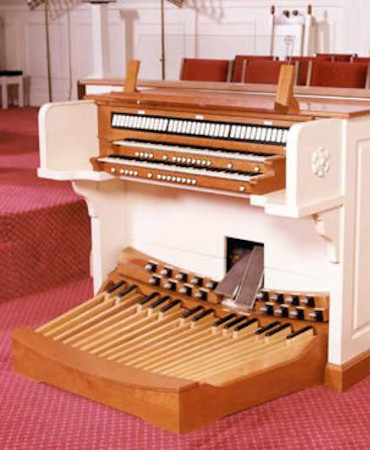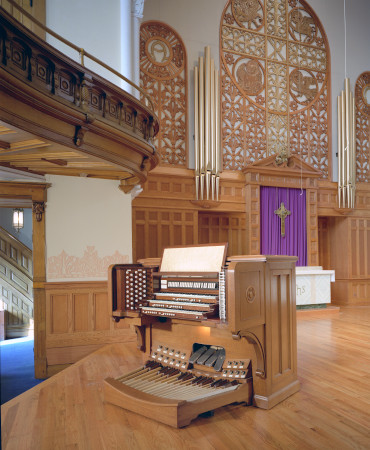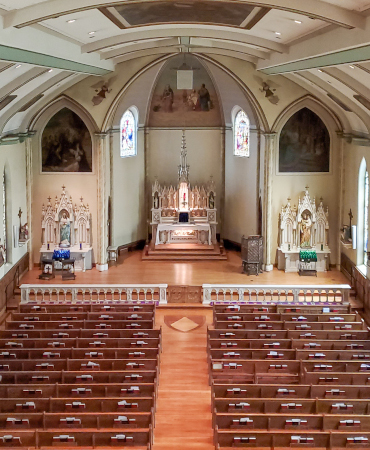Tonal Character
In 1861, the Johnson Organ Company of Westfield, Massachusetts installed the first organ in the rear balcony of the sanctuary at First Presbyterian Church in Granville, Ohio. The mechanical action organ had two manual keyboards and a 12-note pedalboard. Sometime before 1900, this instrument was moved to the recess at the front of the church.
The organ was “modernized” in the 1920s by the Hall Organ Company of New Haven, Connecticut. Hall converted the mechanical action to electrical, and installed additional pipework.
The façade of the organ changed in the 1950s with the removal of the original solid black walnut case. A.W. Brandt Organ Company of Columbus, Ohio, installed grille cloth over the organ chamber opening, installed more pipework and made other improvements. In 1968, Brandt again made tonal and mechanical changes.
Over the course of several years, Muller has integrated the best of the old with new. Initially, six new ranks were installed to replace failing pipework and/or to enhance the specification. The organ was revoiced to brighten the tonal character of the organ.
Subsequently, a new three-rank Mixture was added, the 8′ Oboe was replaced, and. additional voicing was done to refine the sound of the organ. The chamber layout was redesigned to improve tonal projection, and windchests and other failing mechanisms were replaced or restored.
A new custom-built console was installed to replace a nearly inoperable console. The roll-top console was designed to complement the colonial-style sanctuary and features a painted maple cabinet with cherry accents.
Historical Pipework
The current 21 rank organ retains nine sets of historical pipework: the 8′ and 4′ flutes of the Great from the original Johnson, the 16′ Bourdon from the Hall, and 3 sets from the Brandt additions.




